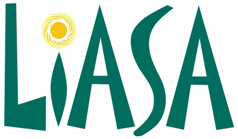Speaker
Ms
Mkhize Tholakele C.
(Council for Scientific & Industrial Research (CSIR))
Description
The information environment is dynamic and requires cataloguers to respond to its fluid and active state. It demands that a cataloguer not only works to describe the types of information resources available in a library collection, but the relationships that exist between resources, or even parts of resources, as well. Today the development of computer technology and electronic document production presents a significantly different challenge than libraries had only fifty years ago a time when information resources and preservation was rooted in the era of books and periodicals, and the card catalogue was the entry point to the library's physical holdings. One area where change is essential is in the area of library catalogues and cataloguing. Cataloguing rules used today represent an unbroken continuum that began in the early 19th century. The rules were developed for linear presentation, either in printed book catalogues or in alphabetically arranged card catalogues. More recently, library systems developers have worked hard to create a machine-readable library catalogue that provided functionality beyond that of the analogue card catalogue. However, the struggle to accommodate technological change with data created using the old rules is clearly not optimal, and hinders the ability of libraries to create innovative services. There are certainly other, equally compelling visions of what the future will look like for libraries, but what stays the same is the need for reusable data from others which are combined "virtually" for delivery to users, as well as for more sustainable and efficient ways to describe these materials. The level of interoperability required for this new environment of data sharing demanded a re-examination of library cataloguing rules. The library online catalogues made use of the data elements produced according to the rules of AACR2. Those data elements, however, were encoded in a machine-readable cataloguing record (MARC) which was developed in the 1960's as the carrier for the library cataloguing data. Due to the proliferation of digital resources a need for AACR revision was noted and acted upon to accommodate materials of this nature, wherein library environment saw an introduction of the RDA – (Resource Description Access) in 2005. RDA is envisaged to overcome all the challenges libraries and information environment are facing currently in defining the nature of the resources in nowadays library environment. It might seem as if RDA is way different from AACR where as there are elements of similarities between these two standards. This paper is intended to trace similarities observed by the author during the testing period of RDA ToolKit in 2010 with the relationship the two cataloguing rules (AACR & RDA) have in data mapping to MARC21 Formats. It addresses quite a number of traditional cataloguing processes, in addition to some new and emerging practices such as metadata.
Primary author
Ms
Mkhize Tholakele C.
(Council for Scientific & Industrial Research (CSIR))

